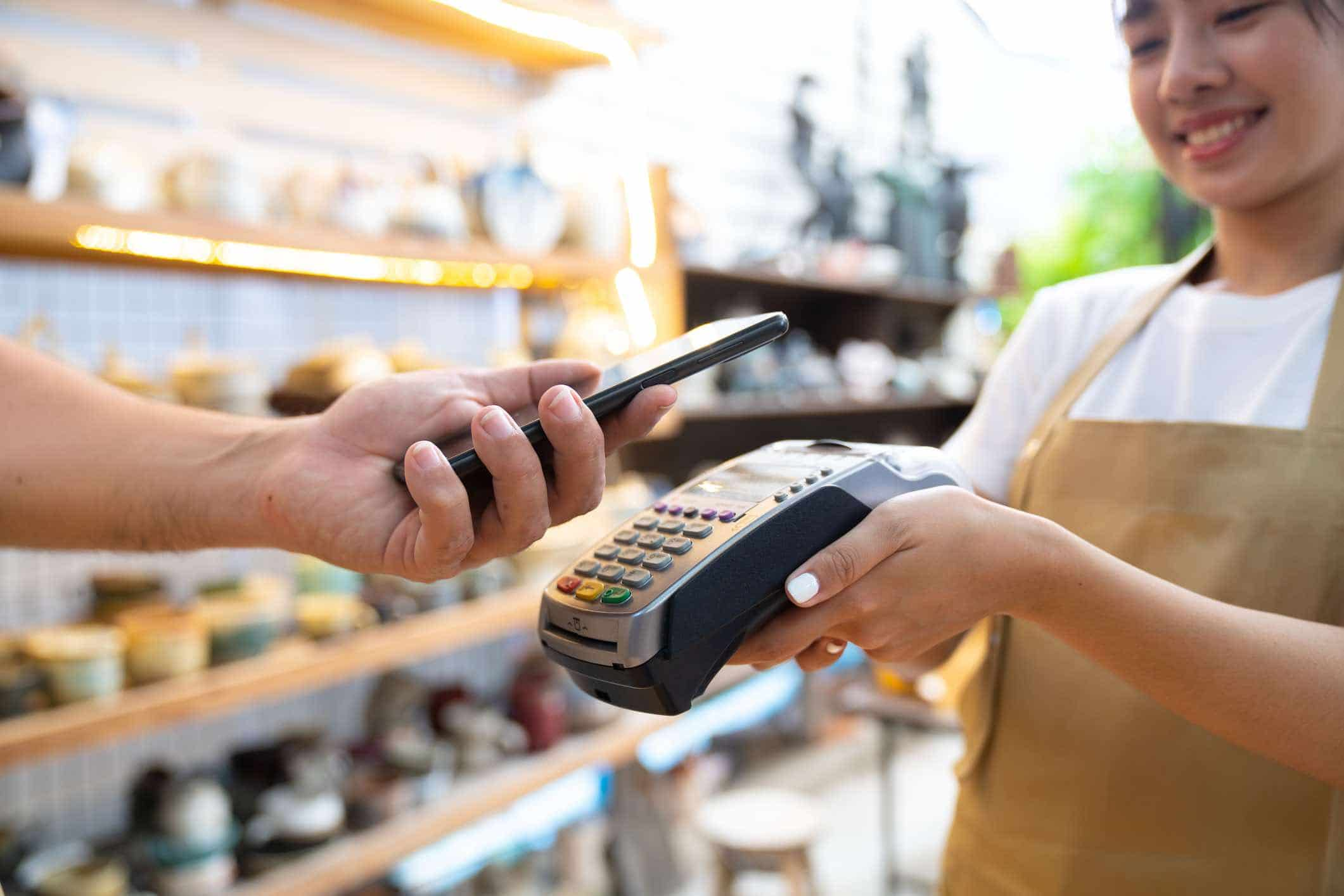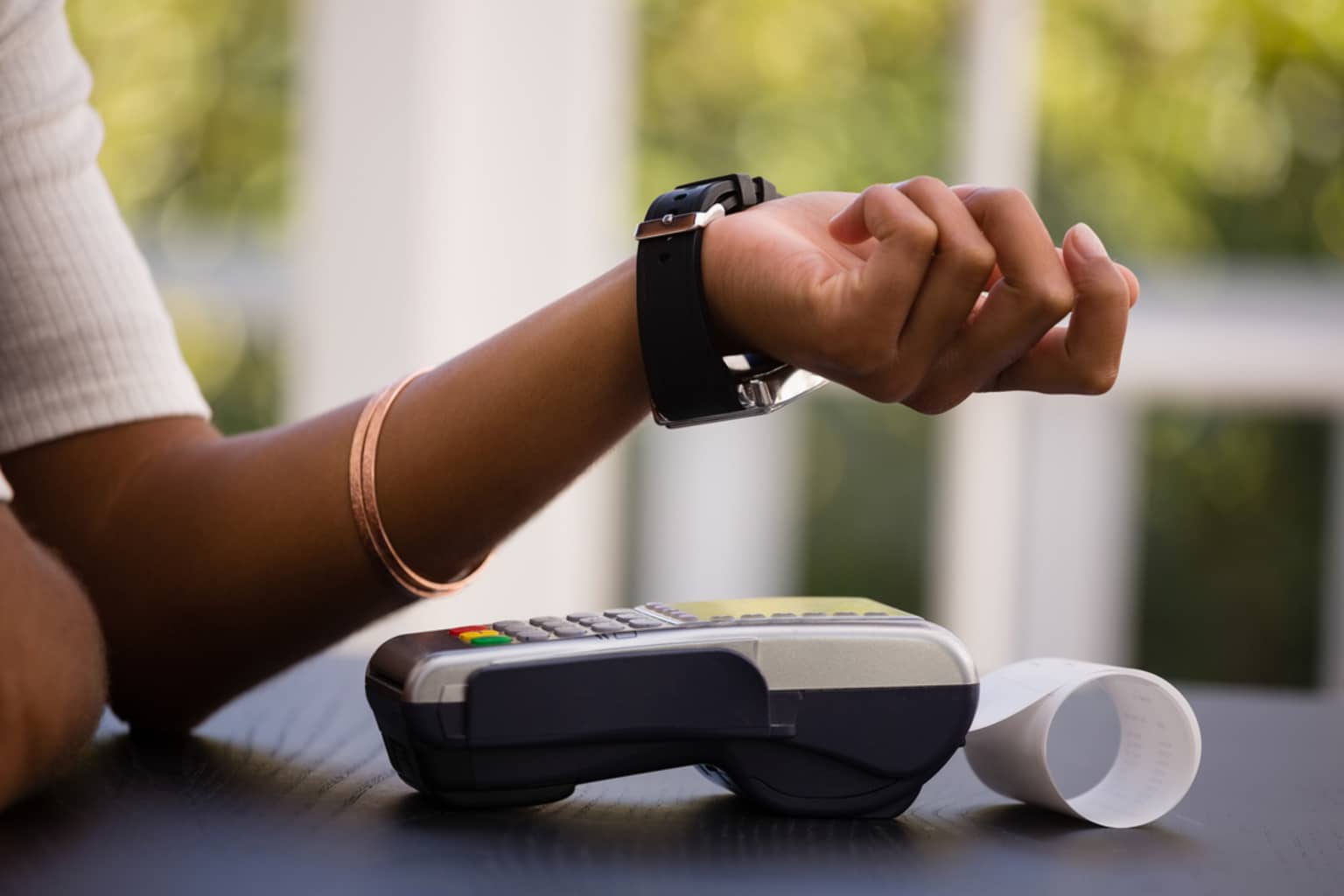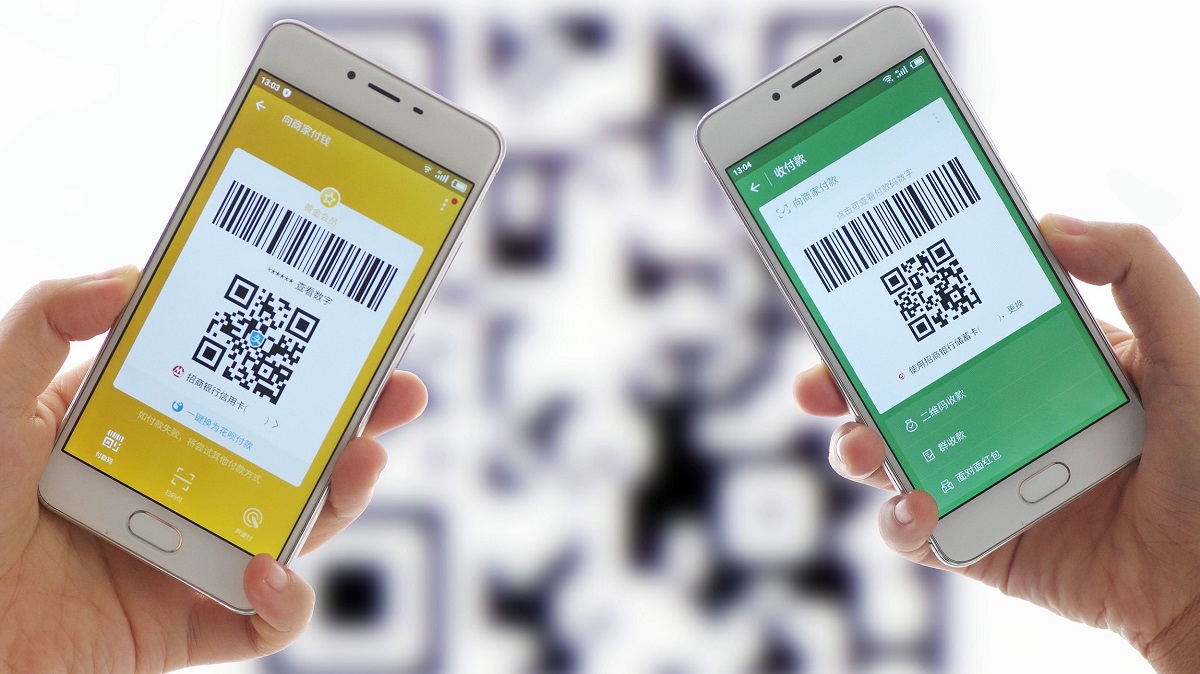Introduction
Welcome to the digital age, where cash is no longer king. With the rise of technology and the increasing popularity of digital payment methods, we find ourselves at the precipice of a cashless society. This new era presents both opportunities and challenges as we transition from physical currency to electronic transactions.
Over the past decade, the use of cash has steadily declined, with more and more people gravitating towards digital payment options. From credit and debit cards to mobile wallets and contactless payments, the convenience and efficiency of these methods have reshaped our financial landscape.
The benefits of a cashless society are undeniable. No more fumbling for loose change, no more carrying around bulky wallets, and no more worries about lost or stolen money. Digital transactions offer a level of ease and security that cash simply cannot match.
However, as we embrace this new era, we must also be aware of the challenges and obstacles that lie ahead. Not everyone has access to reliable internet connections or the necessary technology to participate fully in a cashless economy. Additionally, concerns around privacy, cybersecurity, and potential surveillance raise valid questions about the implications of a cashless society.
In this article, we will explore the rise of digital payments, the benefits and challenges of going cashless, the current state of cashless payments, and the role of mobile wallets and contactless payments. We will also examine the impact on personal finances and budgeting, the implications for small businesses, and the role of governments and financial institutions in facilitating this transition. Finally, we will discuss the potential risks and concerns of a cashless society, the obstacles to achieving it, and offer a glimpse into the future outlook for cashless payments.
Join us on this journey as we unravel the complexities of a cashless society and navigate the ever-evolving landscape of digital transactions.
The Rise of Digital Payments
In recent years, digital payments have experienced an unprecedented surge in popularity, reshaping the way we manage our finances and conduct transactions. The convenience, speed, and security offered by digital payment methods have played a significant role in driving this transformation.
One of the key drivers behind the rise of digital payments is the proliferation of smartphones and internet connectivity. With nearly half of the global population now owning a smartphone, accessing digital payment platforms has become easier than ever before. Smartphone apps, mobile wallets, and online payment gateways have become the go-to options for making transactions.
Another contributing factor to the rise of digital payments is the increasing acceptance of contactless payments. Near Field Communication (NFC) technology enables users to make payments by simply tapping their cards or smartphones on a compatible payment terminal. This technology has gained rapid adoption in various countries, making it easier and faster for people to make purchases.
Moreover, the COVID-19 pandemic has accelerated the adoption of digital payments. With concerns over the spread of the virus through cash handling, more individuals and businesses have transitioned to contactless payment methods. This shift has not only reduced physical contact but has also expedited transactions, allowing for quicker and more efficient payments.
The rise of e-commerce has also played a significant role in fostering the popularity of digital payments. Online shopping has become increasingly prevalent, and the ability to make secure online payments has become crucial. Consumers now have access to a wide range of digital wallets, payment gateways, and mobile banking apps, making online transactions simpler and more seamless.
Financial technology companies, commonly known as fintechs, have emerged as key players in driving the growth of digital payments. These innovative companies leverage cutting-edge technology to offer user-friendly and secure payment solutions. Through their user-friendly interfaces and advanced security measures, fintechs have gained the trust and confidence of consumers worldwide.
Furthermore, the rise of cryptocurrencies, such as Bitcoin, has also contributed to the increasing popularity of digital payments. While still not widely accepted as a mainstream form of payment, cryptocurrencies have sparked interest in the concept of digital currencies. Their decentralized nature and ability to facilitate secure peer-to-peer transactions have led to increased discussions and explorations of digital payment alternatives.
Overall, the rise of digital payments has revolutionized the way we conduct financial transactions. From the convenience of making contactless payments to the ease of online shopping, digital payment methods have become an integral part of our daily lives. As technology continues to advance and consumer behaviors evolve, it is evident that digital payments will play an increasingly prominent role in shaping the future of finance.
The Benefits and Challenges of Going Cashless
The shift towards a cashless society brings with it a range of benefits and challenges. While digital payments offer undeniable advantages, they also present certain obstacles that need to be addressed. Let’s explore both sides of the coin.
The Benefits of Going Cashless:
- Convenience: One of the primary benefits of going cashless is the convenience it offers. With digital payment methods, transactions can be completed quickly and effortlessly. Whether making a purchase online or at a physical store, there is no need to carry physical cash or worry about exact change.
- Security: Digital payments provide a higher level of security compared to cash transactions. Cash can be lost, stolen, or counterfeit, but digital transactions offer encryption and authentication measures that protect against fraud. Additionally, with various authentication methods, such as biometrics and two-factor authentication, the risk of unauthorized access is minimized.
- Financial Tracking: Going cashless allows for easy tracking of expenses and financial management. Digital transactions leave a clear digital trail, which can be beneficial for individuals and businesses when it comes to budgeting and tracking spending habits. This transparency helps identify areas for improvement and encourages better financial decision-making.
- Efficiency: Digital payments streamline the payment process, reducing waiting times and improving overall efficiency. Whether it’s a quick tap of a contactless card or a few clicks on a mobile banking app, digital payments save time for both consumers and businesses.
- Economic Growth: A cashless society has the potential to stimulate economic growth. With digital transactions, money flows more readily, making it easier for businesses to receive payments and for governments to track and collect taxes. This improved liquidity and transparency can contribute to a stronger and more stable economy.
The Challenges of Going Cashless:
- Accessibility and Inclusion: While digital payments have gained popularity, not everyone has equal access to the necessary technology or reliable internet connection. This digital divide can be a barrier to participation in a cashless economy, particularly for vulnerable populations and those in remote areas.
- Cybersecurity Risks: As our financial transactions become increasingly digital, the risk of cybersecurity threats also increases. Hackers and cybercriminals are constantly finding new ways to exploit vulnerabilities in digital payment systems. Protecting personal and financial information from unauthorized access and ensuring robust security measures are in place are critical challenges to overcome.
- Privacy Concerns: Going cashless raises concerns about privacy and surveillance. Digital transactions leave a digital footprint that can be tracked and analyzed. Balancing the need for security and convenience with individual privacy rights is an ongoing challenge that needs careful consideration.
- Dependency on Technology: In a cashless society, reliance on technology becomes paramount. From mobile phones to payment infrastructure, any disruptions or technical issues can bring transactions to a standstill. Ensuring the stability, reliability, and resilience of digital payment systems is crucial to avoid widespread inconvenience.
- Transition for Business Owners: Small businesses, especially those in cash-based industries, face challenges in adapting to a cashless environment. The costs associated with adopting digital payment systems, understanding new technologies, and ensuring a seamless customer experience can be barriers for businesses to overcome.
As we navigate the path to a cashless society, it is important to address these challenges and work towards creating an inclusive, secure, and efficient digital payment ecosystem that benefits everyone. Innovation, collaboration, and proper regulation will be key to ensuring that the benefits of going cashless outweigh the challenges.
The Current State of Cashless Payments
The world is rapidly moving towards a cashless future, driven by advancements in technology and changing consumer behaviors. The current state of cashless payments reveals a shift in preferences and a growing acceptance of digital payment methods across the globe.
In developed countries, cashless transactions have become the norm in many aspects of daily life. From grocery shopping to dining out, consumers are opting for the convenience of digital payments. In some countries, it’s not uncommon to see signs at small businesses indicating that cash is not accepted, and customers are encouraged to pay electronically.
Contactless payments, in particular, have experienced significant growth in recent years. Tap-and-go payment methods, using cards or smartphones equipped with Near Field Communication (NFC) technology, have gained popularity due to their ease of use and speed. Many countries have embraced this technology, with contactless payment acceptance expanding at various merchants, including retailers, public transportation systems, and even vending machines.
Mobile wallets, such as Apple Pay, Google Pay, and Samsung Pay, have also seen widespread adoption. These digital wallets allow users to store their payment information securely on their smartphones and make purchases by simply tapping their devices on compatible payment terminals. Mobile wallets have gained acceptance at major retailers and are also increasingly used for peer-to-peer payments.
Furthermore, peer-to-peer (P2P) payment platforms have gained traction, especially among younger generations. Services like Venmo, PayPal, and Zelle enable users to send and receive money easily with just a few taps on their smartphones. These platforms have become popular for splitting bills, paying friends, and transferring money quickly, eliminating the need for cash or physical checks.
While the adoption of cashless payments has been more prevalent in developed countries, emerging economies are also witnessing a significant shift. Mobile banking and digital payment services are helping to bridge the financial inclusion gap by providing access to financial services for the unbanked population. Mobile money platforms, such as M-Pesa in Kenya, have transformed the way people transact, allowing individuals to send and receive money, pay bills, and even access loans using just their mobile phones.
That said, it’s important to note that cash still plays a crucial role in many economies, particularly in developing nations where digital infrastructure and financial literacy may be limited. Cash remains the primary form of payment in certain sectors, such as street vendors, small businesses, and informal markets.
The COVID-19 pandemic has also significantly impacted the current state of cashless payments. Concerns about the transmission of the virus through physical contact with cash have led to a surge in contactless and mobile payment usage. Governments and businesses have encouraged the use of digital payments to minimize the risk of contamination, resulting in an accelerated adoption of cashless options.
While the current state of cashless payments showcases significant progress, there are still challenges to overcome. Accessibility, digital infrastructure, regulation, and consumer trust are among the key factors that will shape the future of cashless transactions. As technology continues to evolve and consumer preferences evolve, it is likely that the current state of cashless payments will continue to evolve as well.
The Role of Mobile Wallets and Contactless Payments
Mobile wallets and contactless payments have emerged as integral components of the cashless revolution, reshaping the way we make transactions and interact with financial systems. These technologies have played a crucial role in driving the adoption of digital payments and transforming the payment landscape.
Mobile wallets, also known as digital wallets or e-wallets, provide users with a convenient and secure way to store their payment information on their smartphones or other devices. They allow individuals to make in-store purchases, online transactions, and even peer-to-peer payments with just a few taps on their screens.
One of the key advantages of mobile wallets is their ease of use. They eliminate the need to carry physical cards or cash, as payment information can be securely stored within the app. Users can simply unlock their devices, select the desired payment method, authenticate the transaction, and complete the purchase. This streamlined process saves time for both consumers and merchants.
Contactless payments, often facilitated by near-field communication (NFC) technology, have revolutionized the payment experience. Users can make payments by simply tapping their smartphones, smartwatches, or contactless-enabled cards on compatible payment terminals, eliminating the need for physical contact with the point-of-sale device.
These contactless payment options offer a range of benefits. First and foremost, they enhance convenience by allowing for swift, hassle-free transactions. With the tap of a device or card, payments can be completed within seconds, reducing waiting times at checkout counters.
Additionally, contactless payments offer enhanced security. By eliminating the need to physically hand over a card, contactless transactions minimize the risk of card skimming and counterfeit fraud. These payments often employ encryption and tokenization technologies to protect sensitive payment information, making them more secure than traditional magnetic stripe transactions.
Mobile wallets and contactless payments have also contributed to the advancement of financial inclusion. In regions where traditional banking infrastructure is limited, mobile wallets have facilitated access to financial services. Users can store funds, send and receive money, and perform basic banking transactions using their mobile devices. This accessibility has empowered underserved populations, allowing them to participate in the digital economy and gain control over their finances.
Furthermore, mobile wallets and contactless payments have opened up new opportunities for loyalty and rewards programs. Digital wallets often integrate loyalty cards, coupons, and reward schemes, providing users with added convenience and incentives to use digital payment methods. These features not only enhance the customer experience but also enable businesses to gather valuable customer data for personalized marketing campaigns.
However, it is important to acknowledge that widespread adoption of mobile wallets and contactless payments is not without challenges. Infrastructure limitations, compatibility issues, and consumer behavior can pose barriers to adoption. Ensuring that merchants have the necessary payment terminals and that consumers are comfortable using these technologies are crucial considerations.
In summary, mobile wallets and contactless payments have revolutionized the way we make transactions, offering convenience, security, and accessibility. These technologies have significantly contributed to the growth of digital payments and are poised to play an even greater role in the cashless future.
The Impact on Personal Finances and Budgeting
The shift towards a cashless society and the proliferation of digital payment methods have had a profound impact on personal finances and budgeting. These changes have brought both advantages and challenges in managing one’s money effectively.
One of the key impacts of digital payments on personal finances is the increased convenience and ease of tracking expenses. Digital transactions leave a clear digital trail that can be easily accessed and reviewed. This transparency allows individuals to monitor their spending patterns, identify areas of improvement, and make more informed financial decisions.
Digital banking applications and mobile wallets often provide features that categorize transactions, allowing users to see where their money is being spent. This visibility can be instrumental in creating a budget and setting financial goals. With a better understanding of spending habits, individuals can allocate their funds more effectively and make adjustments to align with their financial priorities.
Furthermore, the integration of personal finance management tools within mobile banking apps and digital wallets has empowered individuals to take control of their finances. These tools offer functionalities like expense tracking, bill reminders, and real-time balance updates, providing users with a comprehensive overview of their financial situation.
Going cashless also encourages the adoption of digital budgeting methods. With the ability to track expenses effortlessly, individuals can transition from traditional pen-and-paper or spreadsheet-based budgeting to using specialized budgeting apps or online platforms. These digital tools offer automated tracking, goal setting, and alerts to help users stay on track and manage their spending in a more disciplined manner.
Furthermore, digital payments have facilitated the rise of micro-saving and micro-investing applications. These platforms allow users to automatically save or invest small amounts with each transaction. By rounding up purchases or allocating a percentage of each transaction to savings or investments, individuals can build up their financial reserves or work towards their long-term financial goals without even realizing it.
However, while digital payments offer numerous benefits, they also present challenges in personal financial management. The ease of making transactions with a simple tap or click can sometimes lead to impulsive buying decisions and overspending. It is crucial for individuals to exercise discipline and ensure that they are not exceeding their budgets or accumulating unnecessary debt.
Another consideration is the security of personal financial information. With the increase in digital transactions, individuals need to maintain vigilant privacy and security practices. This includes using secure passwords, regularly monitoring accounts for any suspicious activity, and being cautious when sharing sensitive financial information online.
In summary, the impact of digital payments on personal finances and budgeting has been substantial. The convenience, transparency, and efficiency of digital transactions have empowered individuals to have greater control over their money, make informed financial decisions, and adopt new budgeting strategies. However, it is important for individuals to remain mindful of their spending habits and take necessary precautions to protect their financial security in the digital world.
The Implications for Small Businesses
The shift towards a cashless society and the increasing popularity of digital payment methods have significant implications for small businesses. These changes present both opportunities and challenges that can impact the way small businesses operate and interact with their customers.
One of the key implications for small businesses is the need to adapt and offer digital payment options to meet customer expectations. With the rising preference for digital transactions, small businesses that fail to provide digital payment methods may risk losing customers to competitors who offer more convenient payment options. Implementing digital payment solutions, such as mobile point-of-sale systems or online payment gateways, can help small businesses attract and retain customers in an increasingly cashless economy.
Furthermore, accepting digital payments can improve small businesses’ cash flow and overall efficiency. Digital transactions are typically processed faster than traditional cash or check payments, allowing businesses to receive payments instantly or within a shorter timeframe. Faster payment processing enables small businesses to better manage their working capital and accelerate their accounts receivable turnover.
Small businesses can also leverage digital payment data to gain valuable insights into customer behavior and preferences. Digital payment platforms often provide transaction analytics and reports, allowing businesses to analyze purchasing patterns, identify popular products or services, and refine their marketing strategies. These data-driven insights can help small businesses make informed decisions, optimize inventory management, and personalize the customer experience.
Moreover, digitizing payments can enhance small businesses’ ability to offer value-added services and loyalty programs. By integrating loyalty programs with digital payment platforms, small businesses can incentivize repeat purchases, foster customer loyalty, and gather valuable customer data for targeted marketing campaigns. These personalized experiences can give small businesses a competitive edge and strengthen customer relationships.
However, there are also challenges that small businesses may face in embracing digital payments. The initial cost of implementing digital payment systems, such as purchasing hardware or software, may be a barrier for some small businesses. Additionally, ongoing transaction fees and the need to ensure data security can add to the financial burden.
Furthermore, small businesses need to consider the reliability and maintenance of digital payment infrastructure. Ensuring that payment terminals are functioning properly, maintaining cybersecurity measures, and providing support for customers using digital payment methods are important considerations for small businesses.
Lastly, small businesses must remain vigilant about the potential for fraud or scams associated with digital payments. Educating employees and customers about best practices for secure transactions, such as verifying payment details and protecting personal information, can help mitigate the risks of fraudulent activities.
In summary, the implications of a cashless society for small businesses are significant. While embracing digital payments can enhance customer satisfaction, cash flow, and business efficiency, there are challenges that small businesses must navigate, such as the initial investment, ongoing fees, and security considerations. By understanding the implications and proactively adapting to this evolving payment landscape, small businesses can position themselves for success in a cashless economy.
The Role of Governments and Financial Institutions
In the transition towards a cashless society, the role of governments and financial institutions is crucial. They play a significant role in shaping the landscape of digital payments, ensuring security, promoting financial inclusion, and establishing regulatory frameworks that protect consumers and businesses alike.
One of the primary roles of governments and financial institutions is to establish and enforce regulations that govern digital payment systems. These regulations aim to ensure fair competition, protect consumers against fraud and abuse, and maintain the stability of the financial system. Governments often collaborate with industry stakeholders to develop standards and guidelines that promote interoperability, data security, and the integrity of digital payment systems.
Financial institutions, such as banks and payment processors, also play a critical role in enabling digital payments. They provide the infrastructure, technologies, and expertise required to facilitate secure and efficient transactions. Financial institutions collaborate with government entities to develop payment frameworks, regulatory compliance mechanisms, and risk management strategies to support the growth of digital payments.
Moreover, governments and financial institutions have an essential role in promoting financial inclusion. They have a responsibility to ensure that all segments of society have access to digital payment services, regardless of income, education, or demographic factors. This can involve initiatives such as providing affordable banking services, supporting the development of digital payment platforms tailored to underserved populations, and fostering financial literacy programs to empower individuals with the knowledge to participate in the cashless economy.
Security is a critical aspect of digital payments, and governments and financial institutions have a shared responsibility to protect consumers and businesses from fraud and cyber threats. They work collaboratively to establish security protocols, encryption standards, and fraud detection mechanisms to safeguard digital transactions. Financial institutions implement robust security measures, such as two-factor authentication and tokenization, to mitigate the risk of unauthorized access to sensitive financial information.
Furthermore, governments and financial institutions are at the forefront of driving innovation in the digital payment space. They invest in research and development, foster partnerships with fintech companies, and support the creation of new technologies that enhance the security, efficiency, and usability of digital payment systems. These collaborations drive advancements in areas such as biometric authentication, artificial intelligence, and blockchain technology, which have the potential to revolutionize the way we transact.
Lastly, governments and financial institutions play a critical role in addressing consumer concerns and fostering trust in digital payments. They educate the public, raise awareness about the benefits and risks of digital transactions, and provide avenues for resolving disputes and grievances. By implementing consumer protection measures and ensuring transparency in financial transactions, governments and financial institutions help build confidence in digital payment systems.
In summary, the role of governments and financial institutions in the shift towards a cashless society is multi-faceted. They establish regulations, promote financial inclusion, enhance security, drive innovation, and build trust in digital payments. By working collaboratively, they create an enabling environment that supports the growth and development of digital payment systems, benefiting individuals, businesses, and the overall economy.
The Potential Risks and Concerns of a Cashless Society
While the shift towards a cashless society offers numerous benefits, there are also potential risks and concerns that need to be addressed. These include issues related to privacy, cybersecurity, financial exclusion, and dependence on technology.
One major concern is the potential erosion of privacy in a cashless society. Digital transactions leave a digital footprint that can be tracked and analyzed. The collection of vast amounts of personal financial data raises concerns about how this data is stored, used, and potentially exploited. Individuals may worry about their financial privacy being compromised or their purchasing habits being monitored and used for targeted advertising or other purposes.
Cybersecurity is another significant risk in a cashless society. As financial transactions become increasingly digital, the potential for cyberattacks and data breaches increases. From hacking into payment systems to stealing personal and financial information, cybercriminals continuously adapt their strategies to exploit vulnerabilities in digital payment infrastructure. Ensuring robust security measures and educating individuals about safe practices are critical to mitigating the risks.
Financial exclusion is a concern that arises when the transition to a cashless society leaves behind individuals who do not have access to digital payment options. Some vulnerable populations, such as the elderly, those with limited internet access, or those in developing regions with inadequate digital infrastructure, may find themselves marginalized in the absence of cash. Ensuring that alternative payment methods or financial services are available and accessible to all is crucial to avoid exacerbating existing inequalities.
Dependence on technology is another potential risk in a cashless society. Reliance on electronic devices, internet connectivity, and digital payment systems leaves individuals vulnerable to disruptions in service or technical issues. Power outages, system failures, or cyberattacks could temporarily disable digital payment infrastructure, causing inconvenience and potentially hindering economic transactions. Diversifying payment methods and strengthening infrastructure resilience can help mitigate this risk.
Another concern is the potential for a digital divide between those who can easily adapt to digital payments and those who struggle or choose not to. Older generations or individuals with limited technological literacy may face challenges in understanding and using digital payment systems. This can result in exclusion from economic participation and limited access to goods and services. Education and support programs are needed to bridge this divide and ensure that everyone can fully participate in the cashless society.
Additionally, there is a risk of increased social inequality if digital payment systems favor certain businesses or individuals over others. Small businesses that cannot afford digital payment infrastructure could face disadvantages, leading to potential market concentration and barriers to entry. Governments and financial institutions need to ensure that fair competition is maintained and support is provided to small businesses to minimize this risk.
In summary, while the shift towards a cashless society offers numerous benefits, there are potential risks and concerns that need to be addressed. Privacy, cybersecurity, financial exclusion, dependence on technology, and social inequality are among the key factors that require careful consideration and proactive measures to create an inclusive and secure cashless future.
The Obstacles to Achieving a Cashless Society
While the vision of a cashless society is compelling, several obstacles stand in the way of its full realization. These obstacles range from technological barriers and infrastructure limitations to regulatory challenges and societal behaviors that are deeply rooted in the use of physical currency.
One of the primary obstacles is the lack of digital infrastructure, especially in developing regions. Reliable internet connectivity and access to smartphones or other electronic devices are essential for the widespread adoption of digital payment systems. In areas with limited digital infrastructure, the transition to a cashless society becomes challenging, as individuals and businesses may not have the necessary means to participate fully in digital transactions.
Furthermore, there is a significant segment of the population that remains hesitant or resistant to adopting digital payment methods. Whether due to security concerns, a lack of trust in technology, or unfamiliarity with digital platforms, many individuals continue to rely on physical cash for their financial transactions. Addressing these concerns through education, awareness campaigns, and demonstrating the security and convenience of digital payments is crucial in overcoming this obstacle.
Another obstacle is the coexistence of multiple payment systems and the lack of interoperability between them. Different digital payment platforms, mobile wallets, and contactless payment solutions often have their ecosystems, making it challenging for consumers and businesses to seamlessly transact across various systems. The lack of interoperability limits the convenience and efficiency of digital payments and requires collaboration and agreement among stakeholders to establish common standards.
Legal and regulatory frameworks also present obstacles to achieving a cashless society. Establishing appropriate regulations for digital payment systems is essential to ensure fair competition, consumer protection, privacy, and security. Governments and regulatory bodies must keep pace with technological advancements, strike a balance between innovation and control, and develop policies that foster trust and mitigate risks associated with digital transactions.
In addition, small businesses face obstacles in the transition to a cashless society. Limited financial resources, the cost of adopting digital payment infrastructure, and the need for training and support pose challenges for small businesses with limited technological expertise. Ensuring affordable and accessible options for small businesses to embrace digital payments is crucial to foster their participation in a cashless economy.
Last but not least, societal and cultural factors play a significant role in the adoption of digital payments. Cash has been deeply ingrained in societal norms and behaviors for centuries, and a shift towards a cashless society requires a change in these deeply-rooted habits. Many individuals still have an emotional attachment to physical currency and prefer the tangible nature of cash transactions. Overcoming these cultural barriers requires not only technological advancements but also a shift in societal attitudes towards digital payments and the benefits they offer.
In summary, several obstacles stand in the way of achieving a cashless society. Technological limitations, lack of infrastructure, resistance to digital payment adoption, interoperability challenges, regulatory complexities, small business constraints, and ingrained societal behaviors all present hurdles that need to be overcome. Collaboration between governments, financial institutions, businesses, and consumers is necessary to address these obstacles and pave the way towards a more seamless and inclusive cashless future.
The Future Outlook for Cashless Payments
The future of cashless payments appears promising, driven by technological advancements, changing consumer behaviors, and the increasing influence of digital transformation. As we look ahead, several key trends and developments provide insights into the future landscape of digital transactions.
One of the most significant trends is the continued growth and adoption of mobile payments. With the widespread ownership of smartphones and the convenience they offer, mobile payment platforms and digital wallets are expected to become even more prevalent. As technology evolves, we can anticipate more seamless integration of mobile payments into various aspects of daily life, including transportation, entertainment, and even healthcare.
Contactless payments, already popular in many regions, are poised for further expansion. The COVID-19 pandemic accelerated the adoption of contactless payments, with consumers prioritizing hygiene and convenience. Contactless technology is expected to evolve, allowing for more diverse and secure payment options, such as wearable devices or biometric authentication.
As the digital payment ecosystem evolves, we can also expect to see increased integration of digital currencies, including cryptocurrencies. While cryptocurrencies face regulatory challenges and remain a niche form of payment, their underlying blockchain technology offers potential benefits such as faster, more secure, and decentralized transactions. Central banks and financial institutions are exploring the concept of digital currencies, potentially leading to the development of central bank digital currencies (CBDCs) as a complement to traditional cash.
The growth of big data and analytics will play a significant role in shaping the future of cashless payments. The vast amount of transactional data collected through digital payment platforms provides valuable insights into customer behavior and can be used to personalize services, improve targeted marketing efforts, and enhance overall customer experiences. Data-driven technologies, such as artificial intelligence and machine learning, will continue to evolve, enabling more refined predictions, fraud detection, and personalized financial recommendations.
Financial inclusion will remain an essential focus in the future of cashless payments. Efforts will be directed at closing the digital divide and ensuring that underserved populations, including the unbanked and underbanked, have access to digital payment services. Innovative solutions, such as simplified account opening processes, biometric identification, and mobile money platforms, will help bring financial services to previously excluded individuals and empower them economically.
Technological innovations, such as Internet of Things (IoT) devices and smart cities, will also influence the future of cashless payments. Connected devices embedded in everyday objects, from cars to refrigerators, will enable seamless and frictionless payment experiences. Smart cities will integrate digital payment systems into transportation, parking, and public services, making digital transactions an integral part of urban life.
However, in this vision of a cashless future, it is crucial to address the potential risks and challenges that may arise. Privacy and data protection concerns must be effectively managed to ensure that individuals maintain control over their personal financial information. Enhanced cybersecurity measures and user education will be crucial in safeguarding against evolving threats. Cooperation between stakeholders, including governments, financial institutions, fintech companies, and consumer advocacy groups, will be necessary to establish clear regulations, standards, and consumer protections that foster trust and confidence in digital payments.
In summary, the future of cashless payments holds tremendous potential for innovation, convenience, and financial inclusion. Mobile payments, contactless technology, digital currencies, data analytics, and emerging technologies will shape the landscape of digital transactions. Collaboration between multiple stakeholders and careful management of risks will be pivotal in harnessing this transformative power and creating a secure, inclusive, and seamless cashless future.
Conclusion
The journey towards a cashless society is well underway, driven by advancements in technology, shifting consumer preferences, and the need for more efficient and convenient payment methods. The rise of mobile wallets, contactless payments, and digital transactions has reshaped the way we interact with money, bringing both benefits and challenges.
The benefits of a cashless society are abundant. Digital payments offer increased convenience, enhanced security, improved financial tracking, and streamlined transactions. They have the potential to stimulate economic growth, foster financial inclusion, and revolutionize the way businesses and individuals manage their finances.
However, the path to a cashless society is not without obstacles. Infrastructure limitations, cybersecurity risks, privacy concerns, financial exclusion, and dependence on technology are among the challenges that need to be addressed. Governments, financial institutions, businesses, and consumers must work together to ensure that the benefits of digital payments are accessible to all while mitigating the risks and addressing the concerns associated with this transition.
The future outlook for cashless payments is promising. Mobile payments, contactless technology, digital currencies, and data-driven innovations will continue to shape the landscape of digital transactions. The focus on financial inclusion, privacy protection, and cybersecurity will remain key priorities as we embrace the transformative power of digital payments.
As we navigate this evolving landscape, it is important to strike a balance between embracing digital advancements and preserving the value of physical cash. Ensuring that individuals have access to digital payment options while still maintaining the option to use physical currency is crucial for a inclusive cashless society.
In conclusion, the transition to a cashless society offers great potential to simplify and enhance our financial lives. By addressing the challenges, fostering collaboration among various stakeholders, and prioritizing the needs of individuals and businesses, we can build a future where digital payments provide convenience, security, and financial empowerment for all.

























